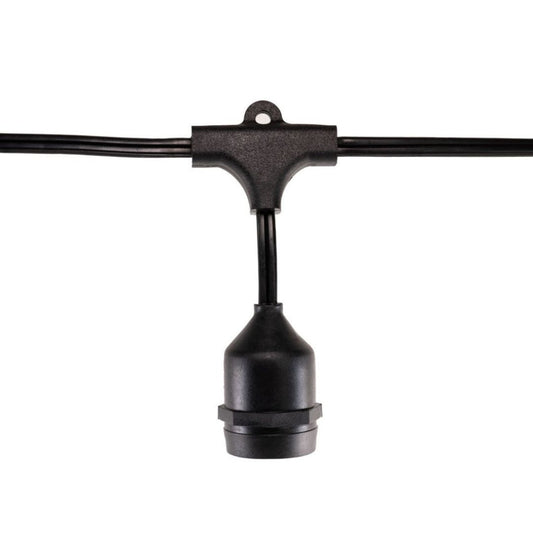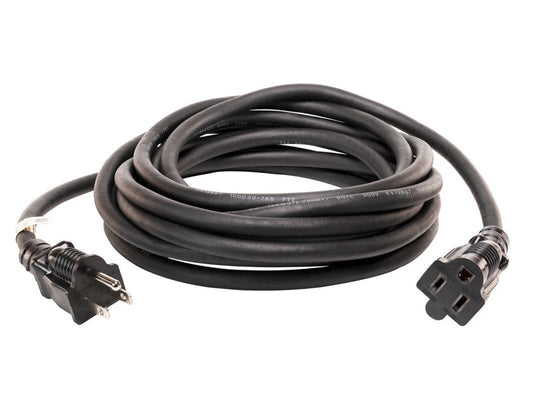Wedding and event lighting is an essential part of creating the perfect ambiance for any celebration. Whether you’re coming from another lighting industry, or are already in the wedding industry and looking to expand your knowledge, getting started in lighting design and installation can feel like a big hurdle. However, with the right tools and techniques, you can create an unforgettable experience for your clients. In this blog, we will guide you through some steps to getting started in wedding and event lighting.
Do your research
The first step in getting started in wedding and event lighting is to do your research on design! Pick up a local wedding magazine or peruse the endless boards and ideas on Pinterest to see what’s trending. If you want to really perfect your abilities, you can occasionally find workshops and conferences to learn more about the industry and the latest trends. You can also take online courses to gain knowledge and skills in lighting design.

Photo by Meghan Hemstra
Network and collaborate with local professionals
Networking and collaborating with other professionals in the industry is an excellent way to gain experience and build your portfolio. Rather than marketing directly to wedding organizers or brides and grooms, you can reach out to local venues that host weddings to see if you can develop a relationship. Furthermore, it’s a great idea to attend local industry events as a vendor, or just register as an attendee to gain a scope of what’s happening in your local area. If you want to step it up, you can join professional organizations such as the International Live Events Association (ILEA) or the Wedding International Professionals Association (WIPA).
Get the creative juices flowing
Wedding and event lighting require a lot of creativity, it allows you to stand out in a competitive market, offer exceptional services to your clients, and create memorable experiences that will last a lifetime. Being able to work with different colors, textures, and patterns is necessary to create a unique and personalized look for each event. Stay up to date on the latest trends and techniques in lighting design to stay ahead of the competition. Again - Pinterest can be a great place to stay up to date on current trends!
 This creative installation uses lawn stakes and G30s to create pathway lighting that separates these glamping tents from the rest of the wedding venue (Photo by Meghan Hemstra)
This creative installation uses lawn stakes and G30s to create pathway lighting that separates these glamping tents from the rest of the wedding venue (Photo by Meghan Hemstra)
Master your attention to detail
Every element of the lighting design, from the type of bulbs to the placement of fixtures, can impact the overall mood of the event. The lighting should complement the venue’s existing decor and highlight the focal points of the space. It’s also important to consider factors like colour temperature, dimming capabilities, and power supply to ensure a seamless and effective lighting experience.
Gather your equipment and tools
Most wedding lighting can be kept simple, but you’ll want to be sure you have all of the necessary tools and equipment on hand before a project. You can start small and expand as new opportunities come up! There are many different types of lighting you can invest in, from spotlights to pendant lights to mini-lights. Our most popular products used for wedding lighting are:
- Warm white G30 bulbs on white wire
- Warm white E26 Edison-style bulbs on white wire
- Mini-lights paired with curtain chains
Other equipment you may want to consider having available to you is:
- Posts and sandbags for hanging temporary lighting, particularly great for outdoor wedding lighting
- Heavy duty extension cords
- Zip ties (you really never know when these will come in handy!)
- And all the other standard installation tools like wire cutters, ladders, and zip plugs for cutting your wire to size

Pictured: Warm white G30s on white wire (Photo by Meghan Hemstra)
Practice and experiment!
Practice involves developing a strong foundation in lighting principles, equipment usage, and safety protocols. Though some of this can be gained through online tutorials and courses, the best way is through hands on experience. Explore different lighting techniques and setups to create the desired ambiance for the event, this can involve playing with colors, textures, and lighting angles to create a unique and impactful design. Dabbling in wedding and event lighting for friends and family will help you gain experience, and provide you with an opportunity to take photos to showcase your abilities to potential clients down the road.
Market and promote effectively
To effectively market your services, identify your target audience (eg. wedding planners, event venues, or individual clients). You can promote your business by creating a strong online presence such as a website and social media accounts that showcase your services and portfolio. To further stand out, consider creating a unique branding strategy that reflects the style and personality of your lighting services. Finally, don’t forget the power of word-of-mouth referrals by providing exceptional service to your clients and encouraging them to recommend your expertise to others.
Prepare yourself for the different hours
Depending on your agreement with the venue or wedding organizers, wedding lighting jobs can come with some pretty unusual working hours. You might be setting up for 3 hours in the middle of the day and returning in the wee hours of the night for removal. Make sure you know what the expectations are regarding take down for each potential job, and if you're not keen on the different working hours, look into hiring some crew members who won't mind staying up late!
In conclusion, getting started in wedding and event lighting can be an exciting and rewarding venture for those interested in the field. Weddings are such a special occasion, and it can be extremely gratifying to be a part of making someones celebration more magical. It requires a good understanding of lighting techniques, equipment, and design principles. By investing in quality equipment, building a solid portfolio, and networking with other event professionals, you can establish yourself as a successful event lighting specialist. With dedication, hard work, and creativity, you can create stunning lighting designs that enhance the ambiance and mood of any event, making it a truly memorable occasion for everyone involved.









